New Community Adaptation Program Builds Resiliency in Communities
For a Deeper Level Disaster Preparation and Recovery
By Red Cross Volunteer Patricia Griffiths
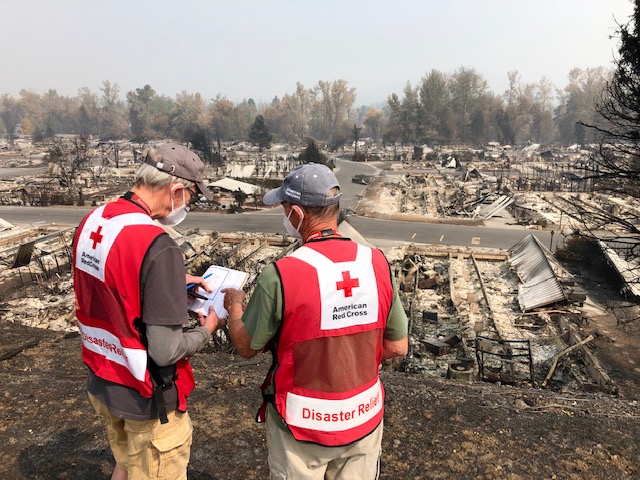
Wildfires lashed towns throughout Jackson County, Oregon during the summer of 2020. Hundreds of thousands of acres and more than 2600 homes were consumed in the flames. In the immediate aftermath, thousands of people sought refuge in Red Cross temporary shelters and help from Red Cross partners. Four years later, many were still devastated, without permanent homes, reeling from financial setbacks and enduring emotional scars.
Based on this and other disaster areas where people live with fewer resources to help them prepare for and recover from major setbacks, the Red Cross has launched a national program to establish permanent resources to build community resiliency.
Called Community Adaptation Program (CAP), it consists of partnerships with local nonprofits that focus on providing basic needs in disaster-prone areas. Specifically, that entails the Red Cross increasing the capabilities of non-profits that are “hyperlocal,” i.e., focus on a particular community, with training, equipment, materials, volunteer pools, program consultation, and funding. In addition, the Red Cross shares its extensive data gathering and analytics capability with its partners.
The CAP program will be located in areas with high disaster risk that have populations between 50,000 and 500,000. The areas selected for CAP are also those considered by the CDC to have high social vulnerability, considering factors such as socio-economic status, language fluency, housing, and transportation. By 2029, a total of 40 CAP locations will have rolled out in Oregon Louisiana, Florida, Tennessee, Kentucky, Arkansas, Alabama, and California. At the forefront of the program, the Oregon CAP team has been in operation since August, 2023 in Jackson County.
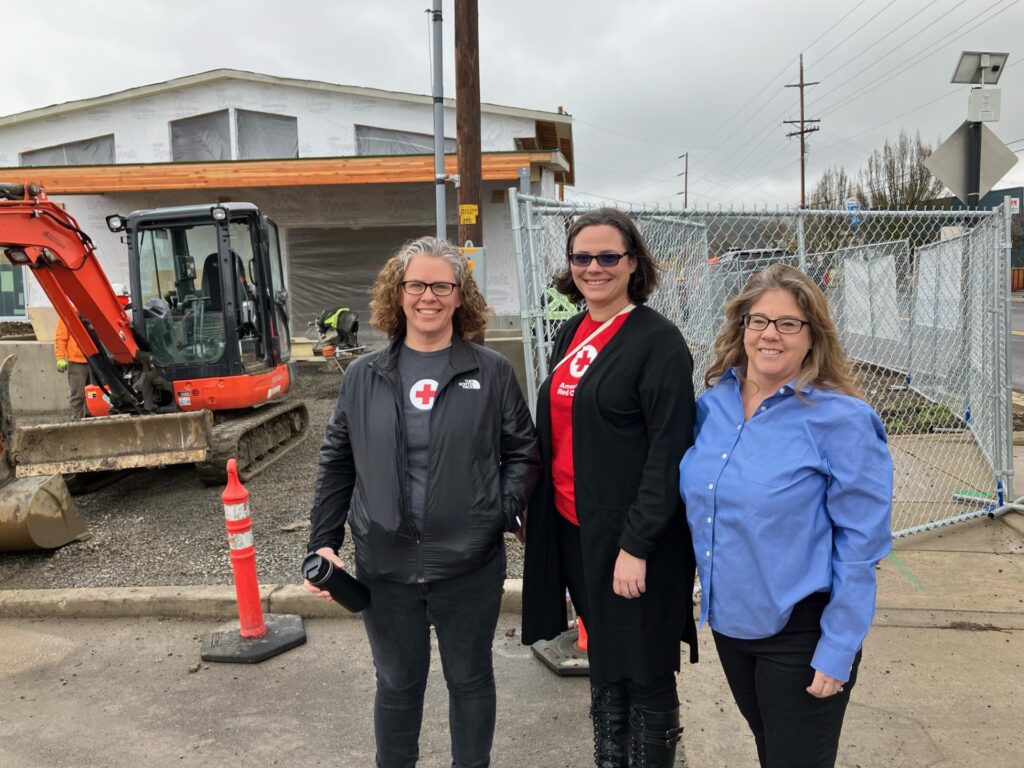
The director of CAP in Oregon, Katrina Lee, (left) explained their operation. “Our goal with CAP is to support and facilitate community partners who are already doing this incredible work,” she said. “By coming alongside, learning about our community partners in areas of health, hunger, housing and resiliency, we are both witnessing areas of phenomenal work and also recognizing areas of gaps within our community.”
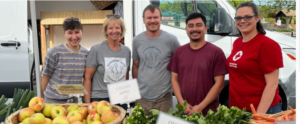
A tangible example of what CAP is doing in Jackson County is the grant awarded to Rogue Food Unites that enables it to have an electrical power system independent of the local power grid. That means that, in the event of a power outage during a future disaster, Rogue Food Unites would still be able to operate its feeding stations and food production.
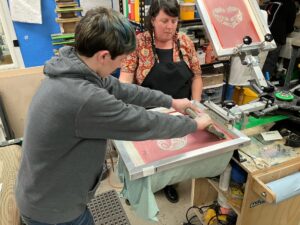
Yet another partnership is with Talent Maker City, located in Talent, Oregon, which channels the talents of volunteers into work for the community. To address the needs of people who lost their homes in the 2020 wildfires, Talent Maker City trained volunteers to build more than 100 beds and even convert a school bus into temporary housing. Talent Maker City also erected a solar panel so people could charge phones and other electronics during the disaster. It has also recruited people with bike repair skills to fix broken wheelchairs. The Red Cross CAP team is aiding Talent Maker City by funding an elevator for its new building, so people with limited mobility can benefit from all the programs that Talent Makers offers.
Another important aspect of the CAP program is that it will connect local nonprofits to one another. “We hope to build connections between partners so that there are more resources in the next crisis,” Katrina Lee said. By doing so, local nonprofit partners might leverage their resources by sharing volunteers, equipment, or transportation. By both acting as a nexus between nonprofits and strengthening individual nonprofits, Lee explained that CAP aims to build a network of resources.
She also described how CAP represents a new timeline for Red Cross services, specifically, a transition from offering communities help around the time of disasters to providing permanent resources. “The idea is to turn our more transactional approach into one of transformation to vulnerable communities like Talent, so they can bounce back quicker in the face of emergency.”
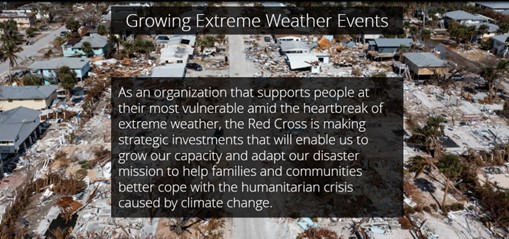
Summarizing the CAP mission, Lee said, “By facilitating trainings, conversations, meetings and partnerships, we are working to build a net that helps support so that all in our community feel safe, valued, and seen during the next disaster,” she said. “These partnerships will be instrumental if we see disaster strike like we did four years ago.” Pausing for a moment of self-reflection, Lee added enthusiastically, “That is what motivates me every day!”
To find out more about how you might help CAP and other Red Cross programs, go to www.redcross.org or call 1-800-HELP-NOW.